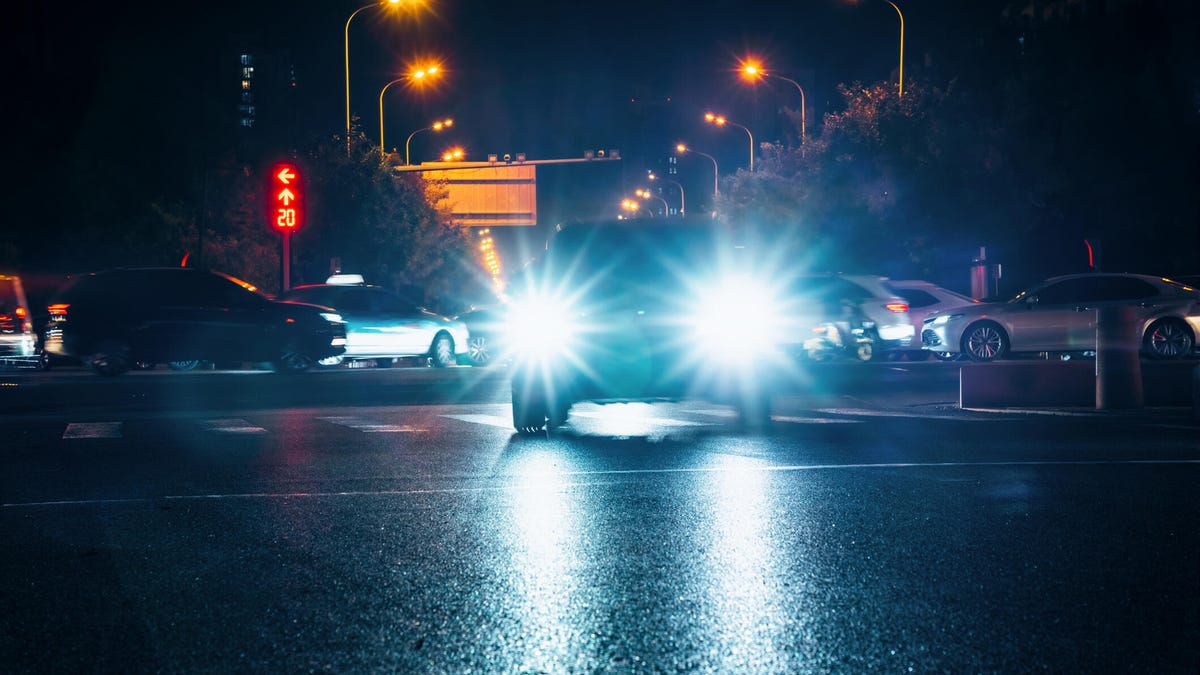The end of daylight saving time is approaching, and that means more driving at night. The fact that we lose an hour of daylight in fall may sound like a trifle, but there’s a 16% increase in collisions with deer when daylight saving time ends, according to a 2022 study. Another, older study saw an increase in fatal car crashes after daylight saving time between 1987 and 1991.
With the extra hour of darkness during commute times, we need to adjust our habits to improve our ability to see at night. Learn why driving in the dark can be hazardous and how to see better and drive more safely after dark.
Why driving in the dark is harder
The main reason shouldn’t surprise you: It’s simply tougher to see in low light. There are other issues too, though, like headlight glare and interior cab lighting.
In the US, headlights on newer vehicles are getting brighter, causing more glare and afterimages. Technology like LED bulbs and laser emitters make driving on the road at night akin to a strobe attack.
There are also folks who have a harder time adjusting to low light, such as older people and anyone with vision problems, like nearsightedness, astigmatism or glaucoma.
9 vision tips for safer driving at night
Luckily, there are some ways you can reduce vision problems when driving after dark.
Keep your windshield clean to reduce glare
Glare can get even worse when your windshield is dirty because the dirt disperses light. Certain treatments, like rain repellent, can also increase glare on your windshield at night. Keep your windshield as clear as possible to reduce glare and help visibility. AAA says a dirty windshield can also limit or obstruct your field of vision, and it recommends aiming for cleaning your windshield at least a once a week.
Keep your headlights clean, too
The Mayo Clinic says you can also help increase visibility by making sure your headlights are free from dirt and debris. That way, they can shine their brightest to catch anything on or near the road. Checking for clean headlights is especially important if you live in a dusty region or an area where hitting bugs is common.
Use high beams when necessary
Be sure to use your high beams on rural roads near forests or fields. The National Safety Council recommends using them for longer or wider stretches of road. High beams can help you see deer in these instances. Never use high beams in bad weather like rain or fog — it can reduce visibility. You should also turn off high beams when going up hills or around bends, to avoid shining high beams at other drivers.
Don’t look directly at oncoming headlights
It may be instinctual to look at that flash coming over the hill, but get in the habit of averting your gaze. Looking into bright headlights can not only blind you in the moment, it may also leave afterimages, making it harder for you to see once the vehicle has passed.
Check headlight alignment during car inspections
The Mayo Clinic also recommends that you work with your mechanic to make sure your headlights are aimed properly. Wear and tear on your car can cause misalignment, and some cars might’ve been made with misaligned headlights, because US laws don’t require manufacturers to test alignment after the headlights are installed, according to NBC News. The result can be devastating glare for other people driving in the dark, and reduced visibility for you.
Dim your interior lights
Interior lights should always be off or dimmed when driving at night. They make your eyes more used to light, which can reduce your night vision — it can take our eyes a few minutes to adapt to darkness. Interior lights also may act as a distraction from the road, because having them on means you may be focused on something in the cab. Interior lights are also one more light source to reflect off your windshield.
Keep your eyeglasses clean
Like dirt on a windshield, smudges on your glasses can disperse light and add to glare problems. Make sure to clean your specs properly, using a cloth made for eyeglasses; warm water; and moisturizer-free mild dish soap, according to Heartland Optical. Wiping your glasses on your shirt may introduce dirt and can scratch lenses.
Wear the right eyeglasses
Keep up on those optometrist appointments so your doctor can check that you’re wearing the right prescription. Also, you can look into anti-reflective lenses, which have a coating that decreases reflective light. Avoid eyeglass styles that obstruct peripheral vision.
There are also night driving glasses, often with yellow lenses, designed to reduce glare from headlights. But talk to your doctor before using them: Some professionals think they could make your night vision worse instead of better.
Keep yourself alert for driving
Even small time changes can leave us feeling a bit jet lagged. Daylight saving time can throw off your circadian rhythm, that internal clock that tells you when to go to bed and when to stay up, according to Northwestern Medicine, and being tired can lead to blurred vision.
Adjusting to the end of daylight saving time can help you be more alert for driving. Check out our guide to recalibrating your internal alarm clock.

